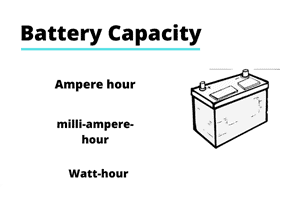Are you perplexed by the bewildering world of electrical units, specifically mAh, mWh, Ah, Wh, and kWh? Don’t worry; we’ve got you covered. In this informative guide, we will decode the meanings of these common electrical units and how they relate to your daily life. With this knowledge, you’ll be better equipped to make informed decisions when purchasing batteries and steer clear of potential pitfalls in the realm of lithium batteries.
1. The Basics: Multiples of Units
Just as we understand that 1 meter equals 100 centimeters and 1 centimeter equals 10 millimeters, we can draw parallels with electrical units. 1Ah equals 1000mAh, 1Wh equals 1000mWh, and 1kWh equals 1000Wh. These multiples help us navigate the world of electrical units more easily.
2. Deciphering mAh and Ah
When it comes to batteries, mAh and Ah are crucial indicators of a battery’s capacity. Milliamperes (mAh) and amperes (Ah) are units of electric current, and hours represent units of time. Electric current, fundamentally, is the charge divided by time. Therefore, Ah is a measure of charge divided by time. For clarity, the standard unit of charge is the Coulomb, where 1C equals 1A multiplied by 1 second. Since an hour contains 3600 seconds, 1Ah is equivalent to 3600C, and 1mAh equals 3.6C.
The battery’s capacity signifies the amount of charge it can store and release through an external circuit, essentially the total charge carried by electrons within the battery. Think of Ah this way: if a battery has a capacity of 1Ah, it can discharge at a constant current of 1A for 1 hour.
3. Unpacking Wh, mWh, and kWh
Understanding watt-hours (Wh), milliwatt-hours (mWh), and kilowatt-hours (kWh) is equally important. One kilowatt-hour (kWh) is a commonly recognized unit of electricity, often used in our homes’ electrical meters to measure energy consumption.
These units are measurements of electrical energy, which itself is a form of energy. The universal unit of energy is the Joule (J), where 1J equals 1W multiplied by 1 second. With an hour consisting of 3600 seconds, 1kWh translates to 3,600,000J, 1Wh equals 3,600J, and 1mWh equals 3.6J.
To grasp the concept of the Joule, imagine lifting a 50g egg approximately two meters above your head – the energy expended in this action is one Joule.
4. The Connection Between Ah and Wh
Ah represents a battery’s capacity, while Wh quantifies its energy. Electrical power (P) is the product of voltage (U) and current (I), which can be expressed as 1W equals 1V multiplied by 1A. Consequently, 1Wh equals 1Ah multiplied by 1V.
This formula allows us to calculate a battery’s energy. For instance, a 10,000mAh battery (equivalent to 10Ah) with a rated voltage of 3.7V yields an energy output of 37Wh. Similarly, for a battery labeled as 11,500mWh, dividing by 3.7V provides us with approximately 3108mAh.
Understanding this relationship is crucial, as some sellers may use mWh instead of mAh to inflate a battery’s capacity, potentially deceiving unsuspecting consumers. When it comes to 18650 lithium batteries, exceeding these values may indicate falsely labeled products.
5. In Conclusion
Today, you’ve gained insight into five essential electrical units that can make your battery purchasing decisions more informed. If you’ve found this information valuable, please consider showing your support by liking, bookmarking, and sharing this article. By doing so, you help fellow electronics enthusiasts enhance their knowledge in this field. Thank you for joining us, and we look forward to seeing you in the next installment!


[…] Understanding Electrical Units: mAh, mWh, Ah, Wh, and kWh […]